Skirting for Tiny Houses, Travel Trailers, and RVs
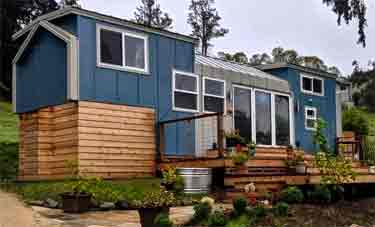
Skirting is an integral part of a tiny house build. Skirting is vitally important for RVs and travel trailers wintering in cold climates.
As this website has grown, information on tiny home and RV skirting has ended up spread over several of our pages. We’ve collected all of the information on this page because it is so important.
Skirting is Essential for Winter Living
Cold wind must be blocked from flowing under your tiny home or RV to keeps pipes from freezing and retain the heat generated by your furnace. Heat tape and holding tank heaters can only do so much against harsh winter winds.
Skirting also prevents wind from whipping underneath the RV that could possibly cause it to overturn. You should also employ a tie-down system. See more on this page.
Skirting does not need to be airtight or heated as its main use is to prevent most air movement. However, if temps drop below zero for extended periods, you might want to string a few incandescent (not LED) bulbs just to add a bit of heat. Place one under each holding tank. See the “contractor cage lights” in the widget section of this page. Skirting helps keep your water pipes from freezing.
For more tips on winter living visit this page: Winter Living, How to Prepare.
Make sure the enclosed area is vented so you’re not trapping moisture.
Skirting adds storage
Look at all this storage under the 5th wheel in the photo. It’s huge, holds a lot of outdoor gardening tools, and still look neat.
Skirting might be required by law:
If you are in an RV park, check with the owners of the park to determine what type and color of skirting is permitted.
You might also check with the county’s zoning officer to see what the county requires. One RV park, I discovered, was told to remove all decks and skirting by the county. Totally baffling.
How to Make Skirting for Your Tiny House or RV
There are many ways to construct skirting. On this page we’ve compiled a comprehensive list of the most efficient and affordable methods and means.
Billboard vinyl
Used vinyl billboard covers make great, easy-to-apply skirting. It’s usually 9 to 11 mil thick rip-stop vinyl. That’s really tough stuff, and cheap. It could be quite colorful on one side but the backside is usually plain white, silver, or black. You’ll be up-cycling a used plastic product and saving the world.
Use an industrial strength Velcro to apply it to your RV and pin the bottom to the ground with metal spikes. You can wrap the bottom edge of the vinyl around a 3/4″ PVC pipe. Glue it into place, then drill holes thru the pipe and use a 12″ spike to hold it firmly in place.
Or, you can use a grommet kit to make holes without the risk of ripping the vinyl, and hook on heavy duty adhesive hooks that are clear and stick tightly to the RV skin. The hooks can be remove by applying heat with a heat gun then use Goo-gone to completely remove the adhesive.
You might even want to add zippers in areas you’ll need to access later.
You can also make skirting from canvas and plastic sheeting. It can be pinned to the ground using sand bags or even rocks.
Pile snow up against it in the winter to provide further insulation and make it taut so it won’t blow or billow in the wind.
Vinyl skirting is easy to remove, store, and reinstall in a new location if needed. Check with the park you are staying in as some parks don’t allow its use.
Pre-made Vinyl Products for Skirting
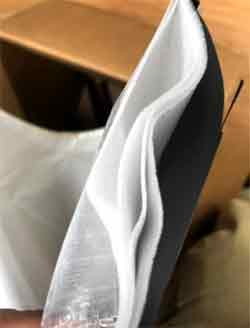
If you’re not handy or don’t have the physical ability to make your skirting from scratch, a skirting kit might be the answer. Cutting a 110′ piece of vinyl is too much for most folks and doing an expert job of creating a top and bottom mounting system requires some skill and know-how.
The Skirting Company
The Skirting Company will make your skirting panels for you by creating 8′ long panels that slide into an awning track. The awning track is secured to your rig with military grade mounting tape (shown here). They also recommend using screws spaced 2 to 3 feet apart. The skirting track cuts easily to fit perfectly around slides and doors.
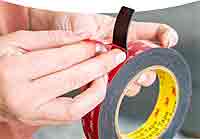
3M 1 Inch Width 15 Ft Length VHB 5952 Black Water Resistant Heavy Duty Multipurpose Double Sided Tape. Sticks like crazy, even in cold temps. Can be used to hang things inside as well.
The skirting track, sometimes called a keder track, is often used to secure awnings. There’s no need for snaps every few inches and you don’t get the air gap either. Plus you don’t need to drill a bazillion holes in your RV.
Quilted Skirting
See the photo at the top of the page. The skirting looks quilted. That’s because it’s several layers of vinyl, insulation, and backing, creating a strong, weatherproof, and UV resistant barrier. This quilted version provides an R-7 insulation value. The quilted skirting for the RV at the top of the page cost $963.00 (tax included).
They have a standard version that is an 18oz, 22mil PVC coated vinyl. It is a wind skirt that provides the barrier but has no insulation value. It is UV-protected, flame retardant, and mold-resistant.
RV Skirting Copany will ship you your kit without shipping fees. They even come to you to install it if you want. Or, you can go to one of their installation facilities.
Insulated Slide Out Wraps
I don’t know why no one had thought of this before. Insulated side out wraps will definitely keep your rig warmer. Invest in the comfort, protection, and aesthetics of your RV with the Skirting Company’s Insulated Slideout Wraps. Don’t let harsh weather conditions compromise your RV experience.

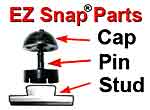
EZ Snap RV Skirting makes installing quality RV skirting a snap. With their patented fastening system you don’t need to drill hundreds of holes in your RV for the snaps. Breakthrough 3M® adhesive technology now means you can have professional-grade RV Skirting, without having to drill screw holes into your RV.
Ideally, temperatures should be at least +15 C / 60 F during installation and for 72 hours continuously. It is recommended to let the adhesive studs set a minimum of 24 hours before you start to install the EZ Snap material.
Diamond Weave Vinyl Material
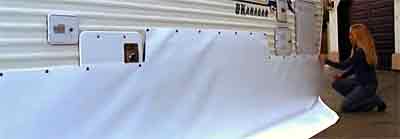
Diamond Weave™ is a very strong and durable vinyl with half the storage bulk of regular RV skirting. The secret to Diamond Weave’s™ strength is its diamond-shaped interlaced scrim base, ensuring lightweight skirting, while still providing a durable insulating barrier in extreme weather conditions. Their skirting material is also triple coated for extra durability.
The Diamond Weave™ RV skirting material is able to withstand temperatures to -40 degree winter conditions. Diamond weave RV Skirting can handle the extreme summer temperatures in places like Arizona, as well the extreme cold of a Colorado winter.
Follow this link to get a free, instant price estimate.
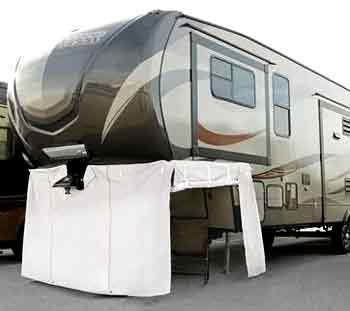 Pre-made 5th-wheel skirt
Pre-made 5th-wheel skirt
This premade 5th wheel skirt from EZ Snap is made of heavy-duty, three-layer white laminated vinyl that extends from bottom of overhang and anchors to the ground. Handy zipper doors allow easy access to stored items on all three sides. Nylon zippers and plastic grommets won’t rust.
ADCO has a similar product for less. via Amazon.com Removable Velcro cutout for extra-large tongues. Screw-in snap fasteners and tent spikes included. $165.53*
“J-Wrap Panel” Skirting
I almost hesitate to mention it because it is pricey, but it looks really nice and it’s perfect for those really nice Class-A’s.
These panels are constructed of durable high-impact ABS Plastic. Suitable replacement for the side panels of Glendale Titanium units.
The panel has a “J” curve to it and comes in 52″ sections, 48″ of viewable panel & a 2″ joining flange on either side. Included is Hook & Loop joiners (x4 per panel) to attach together as many panels as needed. Available in four colors. Click on image to see details.
Tongue and groove wood
My friend Jennifer made her skirting out of tongue and groove wood with a routed 2×4 base and top. That was before wood became so crazy expensive. She stained it to match her tiny home.
She made access doors, vents, and covered the trailer tongue too.
Wood is easier to use on a tiny home because the construction of a tiny home will have more wood to connect to than fiberglass.
Luckily she used screws throughout construction as she moved shortly after.
Hay bale skirting not recommended
With all of the issues I see people having with mice I cannot recommend hay bales as skirting. Hay bales are perfect mouse habitat and make it easy for them to reach your RV.
In addition, hay bales emit moisture and a combustible gas that can spontaneously combust. They come in rectangles that weigh 100 lbs. each and can not be molded around steps, tires, or other protrusions like sewer pipes without losing structural integrity. Straw bales will be less expensive.
On the other hand
But, that being said, they do the job of keeping the wind from whipping under your RV. They won’t be blown away in high wind and they leave no residue or connecting fasteners on your RV. Some recommend putting each bale in a plastic garbage bag. Hay bales have around an R-50 insulation value.
How to skirt your RV with Foam Board
Here’s a great video by Ashley Mann about her experience skirting her trailer with foam board:
Ashley used 7 pieces of 1″x4’x8′ foil-backed polystyrene foam board insulation and aluminum foil tape to hold the sections together. Special duct tape that does not leave a residue was used to connect the foam board to the trailer. Tent stakes were used to hold the bottom down.
See my post: Glues, Tape, and Hooks That Stay On, for more adhesive advice.
Use the foam board on your slide-out too.
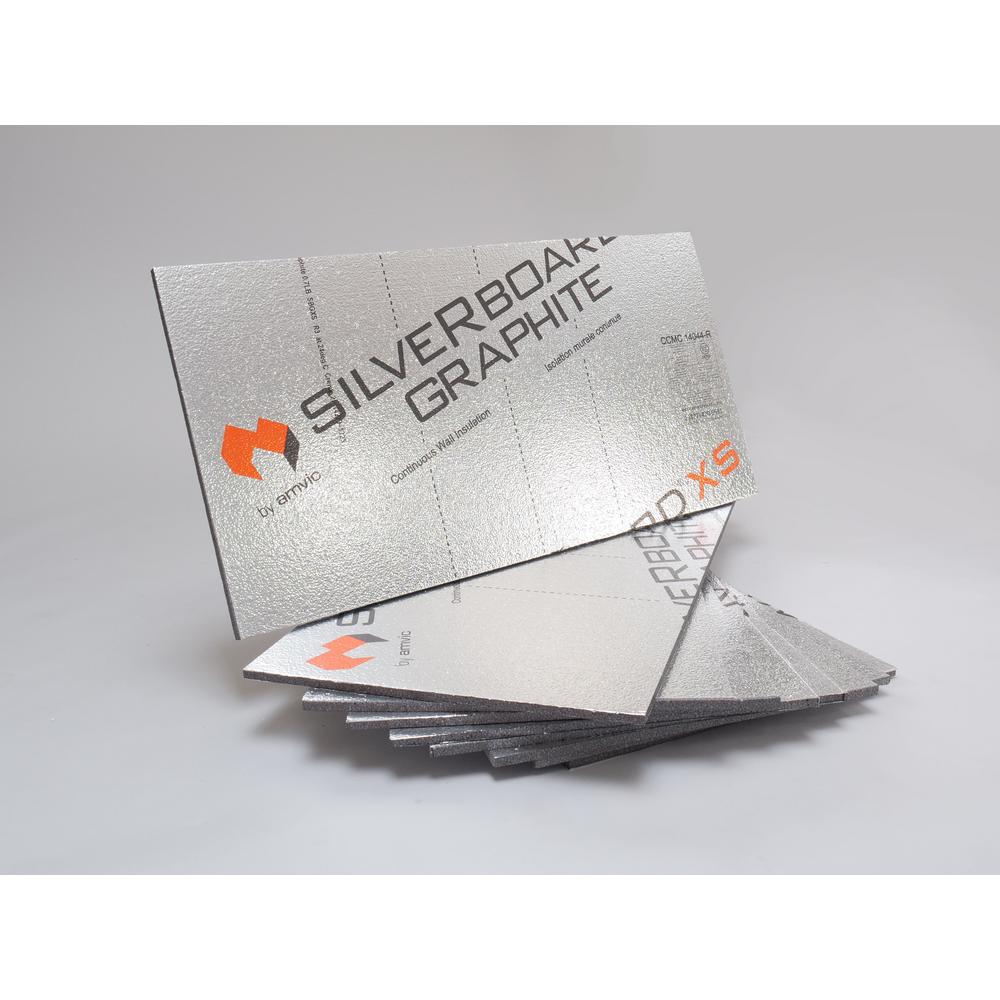
Ashley also did the underside and top of the slide-out as well as taping the seams securely and airtight around the slide-out. Even if you are not skirting with foam board, covering the slide-out like she did can make a huge difference in comfort indoors.
I suggest R-3 Graphite Radiant Barrier Wall Insulation from The Home Depot. SBGXS (SilveRboard Graphite Breathable Exterior Sheathing) foam is laminated with a Radiant Barrier reflective film on both sides increasing board strength and flexibility. The laminated film helps improve joint tape adhesion.
Use foam self-seal pipe insulation to seal the joints around the trailer.
The downside of foam board is that it’s pretty much a one-time-use system and not very environmentally friendly.
See more about Ashley Mann on this page: Downsizing, A Journey. Check out her blog too.
Inflatable Skirting
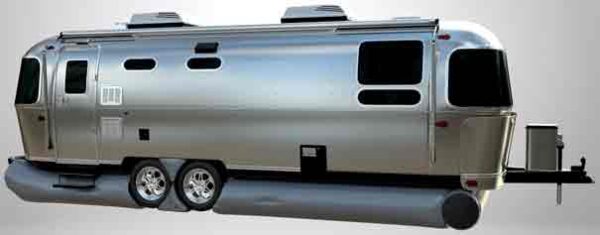
The inflatable skirting by AirSkirts shown at the top of this page is really great for those who move frequently. They can be set up in about a 20 minutes.
The tubes are made from the same rugged material as a river raft. Because they contain a thick layer of non-moving air they are great insulators. They wedge up under your RV and stay firm even in high winds. 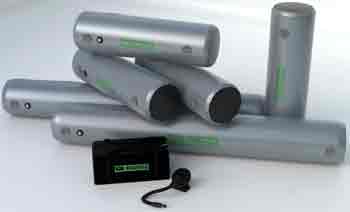
The designers of Airskirts have thought of everything. A small “pillow” to fill the space under the steps and small wedges to plug the space between tires. Kits include a storage bag and electric infiltrator pump. Airskirts work with all travel trailers, RVs, motorhomes, and tiny homes.
To find out more click on any image or link to jump to their website. You’ll need to know how long your trailer is and the ground clearance to select the kit that fits your rig,
Vinyl Skirting Panels
I used vinyl skirting on my trailer. It was easy to install and relatively inexpensive. Vinyl panels come in a huge variety of colors, designs, and styles.
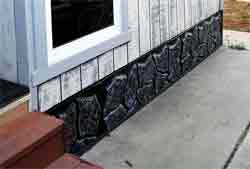 Reil Skirting from The Mobile Home Parts Store imitates a stone or rock wall, brick, or granite. The panels come in different sizes to fit your application. They are secured by top and bottom rails, and need to be secured onto your trailer or tiny home.
Reil Skirting from The Mobile Home Parts Store imitates a stone or rock wall, brick, or granite. The panels come in different sizes to fit your application. They are secured by top and bottom rails, and need to be secured onto your trailer or tiny home.
They also have an automatic vent that opens when the temperature is above 70° and closes when temps drop below 40°. Made of high density thermo-plastic and stainless steel with heavy duty aluminum mesh screen in front and back. Fits 8″H x 16″L opening. 65 square inches of ventilation. Energy saver and helps control moisture build-up under the home.
Stone-Look Vinyl Skirting comes in a myriad of designs and looks. They snap together making an invisible seam. You will need some installation rail too. This is really not expensive. Click on any image to see more.
Mobile Home Vinyl Skirting
Don’t turn off when you hear the words “mobile home.” It may have been invented decades ago when manufactured homes were called mobile homes but it’s still great stuff. There’s a whole range of wood-look products that are inexpensive, keep their color perfectly, and never yellow or melt in the sun.
The panel shown is a vented panel. One or two should be used on each side to increase airflow and remove moisture.
Don’t forget the “underpinning” kit.
Venting the Space
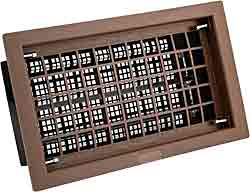
You must vent the enclosed space to prevent high humidity and mold. The whole point of skirting was to stay warmer so how is vent going to help that?
These vents automatically close when the temp gets below 40º and fully open by the time temps reach 70º without batteries.
Simply cut an 8″ by 16″ opening and screw in place.
Other pages of this website you’ll want to see:

RV Winter Living. How to Prepare
Heating Under Your RV Is it worth it?


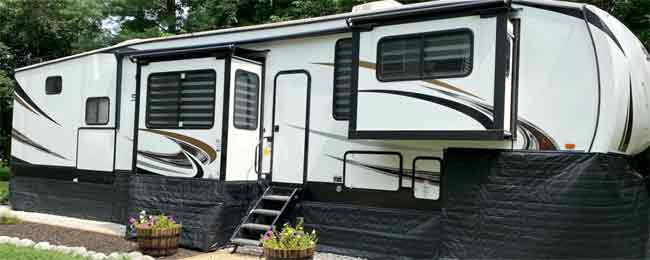
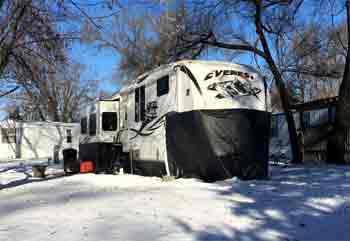
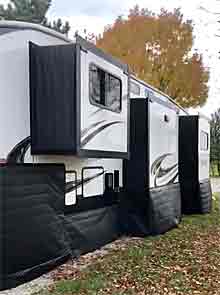

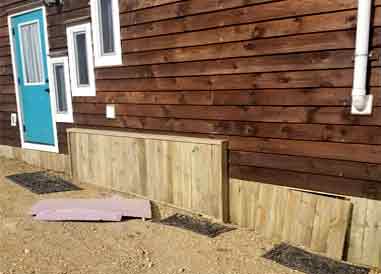
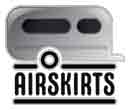
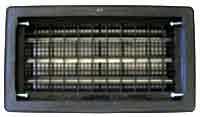



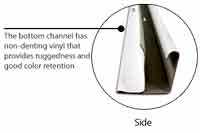
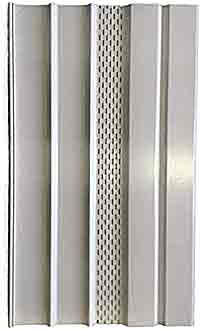

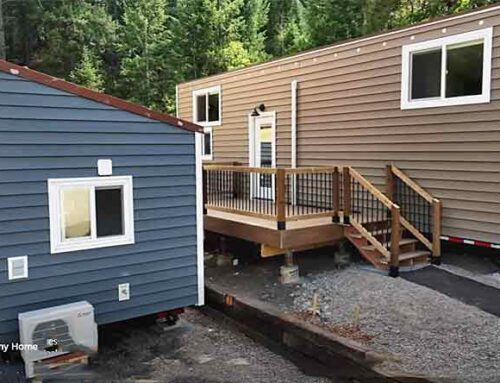
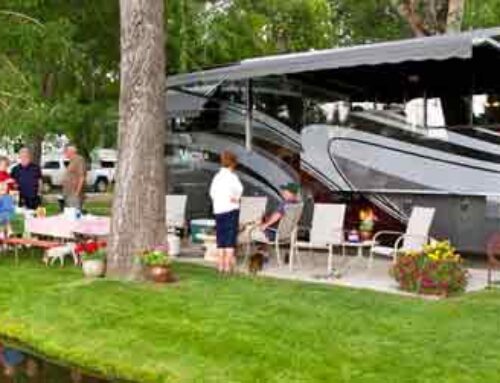
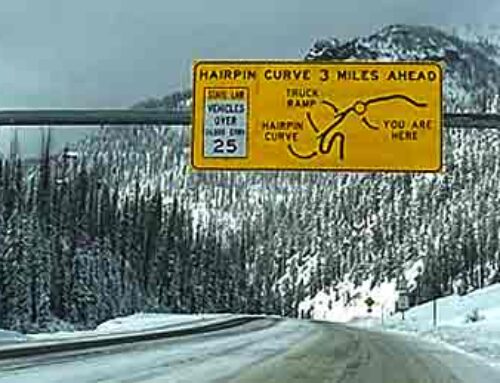
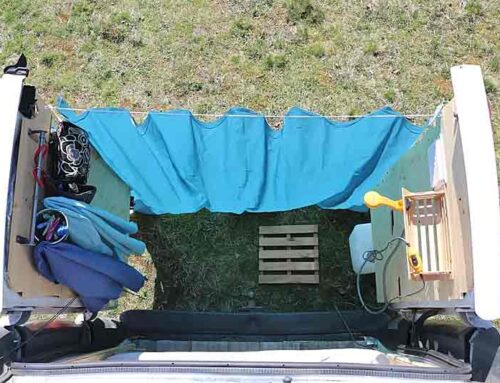
Thank you. It was great. I have a question do you know anybody that could help me out with the water in my fifth wheel RV turn the water on and very little comes out everywhere I’ve checked everything I can think of I’m hooked up to the city water. Thank you very much.
So many things can be blocking your fresh water from a faulty or plugged filter to algae growing in the lines. It will take a professional for a very good DIY handyman to diagnose and correct the issues. It would be impossible for me to suggest someone in your area to help you. Calla local RV dealer and see if they can suggest someone.
Thank you thank you thank you
Yer welcome. I hope you stay warmer this winter.